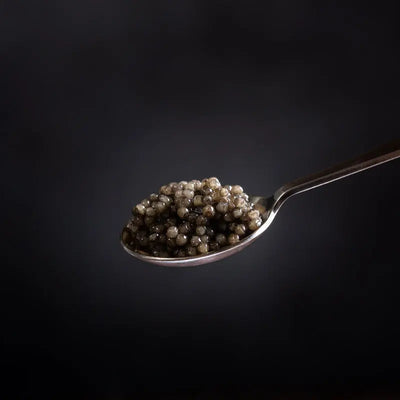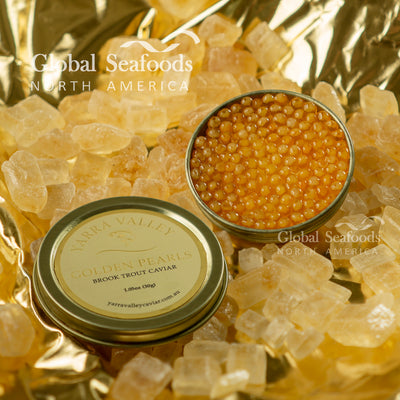+Shop Now
+Categories
- Abalone
- Ahi Tuna
- Alaskan King Crab Legs
- Alaskan Pollock
- Alaskan Sockeye Salmon
- Albacore Tuna
- Anchovy
- Anxiety Relief
- appetizer
- Atlantic Salmon
- Beluga Caviar
- Best Sushi
- black caviar
- black cod
- Blue crabs
- Bluefin Tuna
- Brain Function
- Branzino
- breakfast
- Calamari
- caviar
- Caviar Recipes
- Chef Knives
- Chilean Sea Bass
- Clams
- cocktail caviar
- Cod
- Coho Salmon Caviar
- collagen
- Cooking Methods
- crab
- Crab Balls
- Crab Cakes
- Crab claws
- crab meat
- Crab Recipes
- culinary tips
- decline-sturgeon
- Diver Scallops
- Dover Sole
- Dry Aged Fish
- Dungeness Crab
- Dungeness crab clusters
- Dungeness Crab Legs
- Exotic Shellfish Sampler
- Fish and Seafood
- fish oil
- Fish Sauce
- flat fish
- FLOUNDER FISH
- Focus
- Fresh Seafood Delivery
- Fresh Wild Alaskan Salmon
- Geoduck
- Gooseneck Barnacles
- Gourmet Seafood Platter
- haddock
- halibut
- Halibut Recipes
- hamachi
- Hamachi Recipe
- health
- healthy eating
- Ikura
- Japanese restaurants
- Jonah crab
- Jumbo Sea Scallops
- Kaluga Caviar
- kelp
- king crab
- King Crab Legs
- King Salmon
- kitchen
- Lingcod
- Live King Crab
- Live Lobsters for Sale
- Live Scallops
- Live seafood
- lobster
- Lobster Tail
- luxury food
- mahi mahi
- Marine Collagen
- Mollusk
- Monkfish
- Mussels
- New
- Nutrition
- octopus
- Opah
- Ora King Salmon
- Osetra Caviar
- Ossetra Sturgeon Caviar
- oysters
- Pacific Cod
- Pacific Hake
- Pacific Halibut
- Pacific Ocean
- Pacific Whiting
- Pacific Whiting Recipe
- Paddlefish Caviar
- Petite Oysters
- Petrale Sole
- Poke Tuna
- Pollock
- Pregnancy
- Premium Caviar Selection
- Recipe
- red caviar
- Red Crab
- rock fish
- Rockfish
- Rockfish Recipes
- sablefish
- Sablefish (Black Cod) Recipes
- salmon
- Salmon Caviar
- Salmon lox
- Salmon Poke
- Salmon Recipes
- salmon roe
- Sardines
- Sashimi
- Sashimi-Grade Tuna
- Scallop
- scallops
- Scallops Recipe
- Sea Urchi Recipe
- sea urchin
- Sea Urchin Sushi
- sea weed
- Seafood
- Seafood Dishes
- Seafood Market
- Seafood Recipe
- Seafood Restaurants
- sevruga caviar
- shellfish
- Shrimps & Prawns
- Silver Salmon
- Smoked
- Smoked Salmon
- Smoked Tuna
- Snail Caviar
- Snapper Recipe
- snow crab
- Sole & Flounder Recipes
- Squid
- Steelhead
- Sturgeon Caviar
- Sustainable Seafood Choices
- Swordfish
- Tilapia
- Tilapia Fish
- Tobiko
- Trout
- tuna
- Tuna Recipe
- weathervane scallops
- white fish
- White Sturgeon
- White Sturgeon Caviar
- Whiting Fish
- Wild Caught Shrimp
- Yellowfin Tuna
- Yellowtail snapper
World of White Sturgeon Caviar: Origins, Taste & Culinary Uses
January 03, 2025

White Sturgeon Caviar: The Pinnacle of Sophistication
White sturgeon caviar, prized for its delicate flavor and refined texture, stands as one of the most sought-after delicacies in the culinary world. Harvested from the magnificent Acipenser Transmontanus, this caviar encapsulates the essence of luxury and gourmet excellence.
Acclaimed chef Thomas Keller once stated,
"Caviar is a fleeting taste of eternity, a reminder that life is rich and rewarding."
White sturgeon caviar perfectly embodies this sentiment, making it a cherished treasure on dining tables worldwide.
What Makes White Sturgeon Caviar Unique?
1. Origin and Sourcing
White sturgeon caviar comes from sturgeon primarily raised in sustainable farms in California and the Pacific Northwest. These farms focus on environmental responsibility, ensuring premium quality roe without compromising ecosystems.
2. Exquisite Flavor Profile
This caviar is renowned for its smooth, creamy taste with nutty undertones. Its medium-sized, glistening pearls burst with a delicate brininess that leaves a lingering richness.
3. Aesthetics
The caviar boasts a glossy appearance, ranging from light gray to black, adding an element of sophistication to any dish.
Health Benefits of White Sturgeon Caviar
Rich in Omega-3 Fatty Acids
These essential fats support heart health, reduce inflammation, and boost brain function.
Packed with Vitamins and Minerals
Loaded with vitamin B12, selenium, and iron, white sturgeon caviar provides a nutritious addition to your diet.
Supports Skin Health
Antioxidants in caviar help maintain youthful, radiant skin.
How to Serve White Sturgeon Caviar
1. Traditional Pairings
White sturgeon caviar shines when served with classic accompaniments like:
- Blinis: Soft, pillowy pancakes that enhance the texture contrast.
- Crème Fraîche: Adds a tangy creaminess to balance the caviar's richness.
- Champagne or Vodka: The effervescence of champagne or crispness of vodka amplifies its delicate flavors.
2. Creative Culinary Applications
- Deviled Eggs: Top each egg with a dollop of caviar for a luxurious twist.
- Sushi Rolls: Incorporate caviar for an upscale fusion experience.
- Caviar Butter: Blend with unsalted butter for a decadent spread.
3. Modern Techniques
For adventurous gourmets, use caviar as a garnish on chilled soups or atop fresh oysters for an unforgettable experience.
Where to Buy Premium White Sturgeon Caviar
Ensure the highest quality by purchasing from trusted retailers like Global Seafoods. Their curated selection includes:
FAQs About White Sturgeon Caviar
Q1: How should I store white sturgeon caviar?
Caviar should be kept refrigerated at 28–32°F. Consume within 3–5 days of opening for optimal freshness.
Q2: Can white sturgeon caviar be frozen?
Freezing is not recommended as it alters the texture and taste of the delicate pearls.
Q3: How much caviar is enough for a serving?
Plan for 30–50 grams per person for a proper tasting experience.
The Cultural Significance of White Sturgeon Caviar
White sturgeon caviar has graced the tables of royalty and fine dining establishments for centuries. Its luxurious nature makes it a centerpiece for celebrations and a status symbol in culinary traditions.
Pairing Ideas: Perfect Complements for White Sturgeon Caviar
- Drinks: Champagne, vodka, or dry white wines enhance the brininess.
- Cheese: Soft, mild cheeses like mascarpone or ricotta provide a creamy backdrop.
- Seafood: Serve alongside lobster, crab, or scallops for a decadent seafood feast.
Conclusion: Elevate Your Palate with White Sturgeon Caviar
White sturgeon caviar offers a gateway to unparalleled luxury. Its creamy texture, rich flavor, and health benefits make it a must-have for anyone looking to elevate their dining experience.
Call to Action:
Indulge in the elegance of white sturgeon caviar. Explore premium selections at Global Seafoods and elevate your next culinary adventure.
YouTube Channel: For more gourmet inspiration, visit Global Seafoods YouTube Shorts.
Whether you're savoring it as part of a special occasion or incorporating it into everyday indulgence, white sturgeon caviar is the epitome of sophistication. Savor the finest—because you deserve nothing less.
Related Products
Share:
Also in News

How to Make Sea Bream Sushi With Dry-Aged Tuna & Crab Roll — Step-by-Step With Chef Joshua
December 07, 2025
A complete guide to making Sea Bream sushi at home, including filleting, curing, slicing, and building a Dry-Aged Tuna & Crab sushi roll. Chef Joshua shares professional tips for restaurant-quality results.

Boiled Crab for Game Night: Everything You Need for a Perfect Seafood Party
June 27, 2025
Take your game night to the next level with a Boiled crab party. Learn the best recipes, cooking tips, and hosting hacks for a memorable seafood feast.

Boiled Crab for Date Night: A Romantic Guide to the Perfect Seafood Feast
June 27, 2025
Make your next date night unforgettable with a romantic Boiled crab experience. This guide covers everything you need to know, from ambiance to the best crab varieties.
+Shop Now
+Categories
- Abalone
- Ahi Tuna
- Alaskan King Crab Legs
- Alaskan Pollock
- Alaskan Sockeye Salmon
- Albacore Tuna
- Anchovy
- Anxiety Relief
- appetizer
- Atlantic Salmon
- Beluga Caviar
- Best Sushi
- black caviar
- black cod
- Blue crabs
- Bluefin Tuna
- Brain Function
- Branzino
- breakfast
- Calamari
- caviar
- Caviar Recipes
- Chef Knives
- Chilean Sea Bass
- Clams
- cocktail caviar
- Cod
- Coho Salmon Caviar
- collagen
- Cooking Methods
- crab
- Crab Balls
- Crab Cakes
- Crab claws
- crab meat
- Crab Recipes
- culinary tips
- decline-sturgeon
- Diver Scallops
- Dover Sole
- Dry Aged Fish
- Dungeness Crab
- Dungeness crab clusters
- Dungeness Crab Legs
- Exotic Shellfish Sampler
- Fish and Seafood
- fish oil
- Fish Sauce
- flat fish
- FLOUNDER FISH
- Focus
- Fresh Seafood Delivery
- Fresh Wild Alaskan Salmon
- Geoduck
- Gooseneck Barnacles
- Gourmet Seafood Platter
- haddock
- halibut
- Halibut Recipes
- hamachi
- Hamachi Recipe
- health
- healthy eating
- Ikura
- Japanese restaurants
- Jonah crab
- Jumbo Sea Scallops
- Kaluga Caviar
- kelp
- king crab
- King Crab Legs
- King Salmon
- kitchen
- Lingcod
- Live King Crab
- Live Lobsters for Sale
- Live Scallops
- Live seafood
- lobster
- Lobster Tail
- luxury food
- mahi mahi
- Marine Collagen
- Mollusk
- Monkfish
- Mussels
- New
- Nutrition
- octopus
- Opah
- Ora King Salmon
- Osetra Caviar
- Ossetra Sturgeon Caviar
- oysters
- Pacific Cod
- Pacific Hake
- Pacific Halibut
- Pacific Ocean
- Pacific Whiting
- Pacific Whiting Recipe
- Paddlefish Caviar
- Petite Oysters
- Petrale Sole
- Poke Tuna
- Pollock
- Pregnancy
- Premium Caviar Selection
- Recipe
- red caviar
- Red Crab
- rock fish
- Rockfish
- Rockfish Recipes
- sablefish
- Sablefish (Black Cod) Recipes
- salmon
- Salmon Caviar
- Salmon lox
- Salmon Poke
- Salmon Recipes
- salmon roe
- Sardines
- Sashimi
- Sashimi-Grade Tuna
- Scallop
- scallops
- Scallops Recipe
- Sea Urchi Recipe
- sea urchin
- Sea Urchin Sushi
- sea weed
- Seafood
- Seafood Dishes
- Seafood Market
- Seafood Recipe
- Seafood Restaurants
- sevruga caviar
- shellfish
- Shrimps & Prawns
- Silver Salmon
- Smoked
- Smoked Salmon
- Smoked Tuna
- Snail Caviar
- Snapper Recipe
- snow crab
- Sole & Flounder Recipes
- Squid
- Steelhead
- Sturgeon Caviar
- Sustainable Seafood Choices
- Swordfish
- Tilapia
- Tilapia Fish
- Tobiko
- Trout
- tuna
- Tuna Recipe
- weathervane scallops
- white fish
- White Sturgeon
- White Sturgeon Caviar
- Whiting Fish
- Wild Caught Shrimp
- Yellowfin Tuna
- Yellowtail snapper
Shop Now
Main
News & Updates
Sign up to get the latest on sales, new releases and more…
© 2025 Global Seafoods North America.










